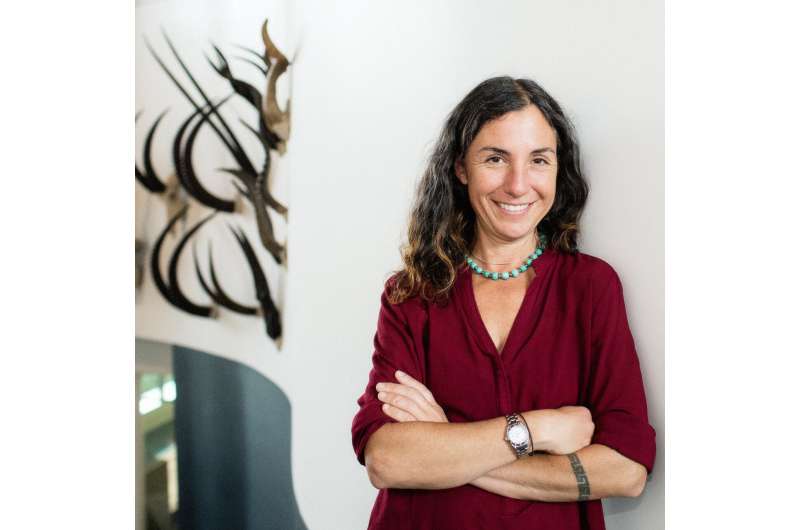Credit: University of New England
Where did dingoes come from and when? Who brought them and what can this tell us about human evolution on our continent? They are mysteries steeped in time that University of New England (UNE) archaeologist Dr. Melanie Fillios is eager to solve.
The antiquity of the dingo, its cultural importance and ecological impact are among the most vexed issues in rural and regional Australia today. Whether to conserve the dingo as a native species or exterminate it as an invasive pest hinges on its origins and heritage, as well as the role it has traditionally played in the landscape.
As she embarks on the first-ever analysis of dingoes that lived before European contact, Dr. Fillios is excited and hopeful. Hopeful of resolving long-standing questions surrounding the dingo's introduction, ancient lineages and its relationship with people through time.
"Australians have a very complicated relationship with dingoes," she says. "The political situation is very informed by how we see their role in Australia's past, so we need to go back a few thousand years to learn how long dingoes have been here, where they came from and the nature of their role. But geological and museum specimens can only take us so far."
That's where palaeontological samples come in. In the months ahead Dr. Fillios will lead a multidisciplinary team of researchers from UNE, the University of Sydney and the University of NSW to study dingoes that fell into natural pit traps thousands of years ago. Well preserved in the constant cool temperatures of caves, the remains will be retrieved and undergo a suite of sophisticated tests.
"The testing of modern dingoes has shown a lot of genetic variability," Dr. Fillios says. "Their genetics is often mixed with that of modern domestic dogs something that started happening with the arrival of the First Fleet. By comparing modern dingoes to dingoes of the pre-Contact era we hope to get a much truer picture of the driving forces behind that genetic variability.
"Variability is important because it gets at several things. What is the source of that variability? Did we have more than one group of dogs come in, and therefore more than one group of people arrive? That's one possibility. Is the genetic variability an ecological adaptation, because Australia has a very unique environment that is likely different from where dingoes originated? Or is it some sort of adaptation to living with people?"
Interview with Dr Melanie Fillios. The future - and distant past - of the dingo. Credit: UNE Media
Dr. Fillios has spent more than a decade studying dingoes in the archaeological record and, with these colleagues, the role of dingoes in Australian ecosystems, including their place in Indigenous society. This new project, supported by the Australia and Pacific Science Foundation, will see the team conduct morphological and genetic analyses, and genome sequencing on the ancient dingo skeletons.
Some of them will hopefully be 3000-4000 years old, the same vintage as the thylacine, which is thought to have become extinct about 4000 years ago. First they will be carbon-dated and then collagen extracted from the bones for isotopic and genetic analyses.
"Often archaeological deposits are not in great shape and crania, in general, don't survive very well because the bones are quite fragile," Dr. Fillios says. "The remains we recover from the caves will be scanned so we can create 3-D models of the bones, and this will enable us to do very precise measurements to compare things like tooth sizes with modern dingoes.
"Whether there are similarities with or differences to the modern populations will help us to determine whether we have one population of dingoes or many populations. This will help us to understand how many radiations of canines into Australia there have been in the past. Then the questions become what was their role in the ecosystem and what was their relationship to people?"
With team member Dr. Kylie Cairns' recent molecular work on modern dingoes showing that they have the greatest genetic affinity with New Guinea singing dogs, the jury is still out on where dingoes may have originated. "Kylie's work may suggest peoples from PNG, not Indonesia, as has been previously thought, brought dingoes to Australia," says Dr. Fillios.
"But the ancient dingo DNA may tell us another story again, providing new clues to human lineages. These are really important questions for Australia's heritage.
"To me, it's at the human-environmental-animal nexus. I like to think of it as a circle, and human relationships with animals and our relationships with the environment are all part of that circle. Hopefully our work will help to inform future management and policy regarding dingoes."
Provided by University of New England






















